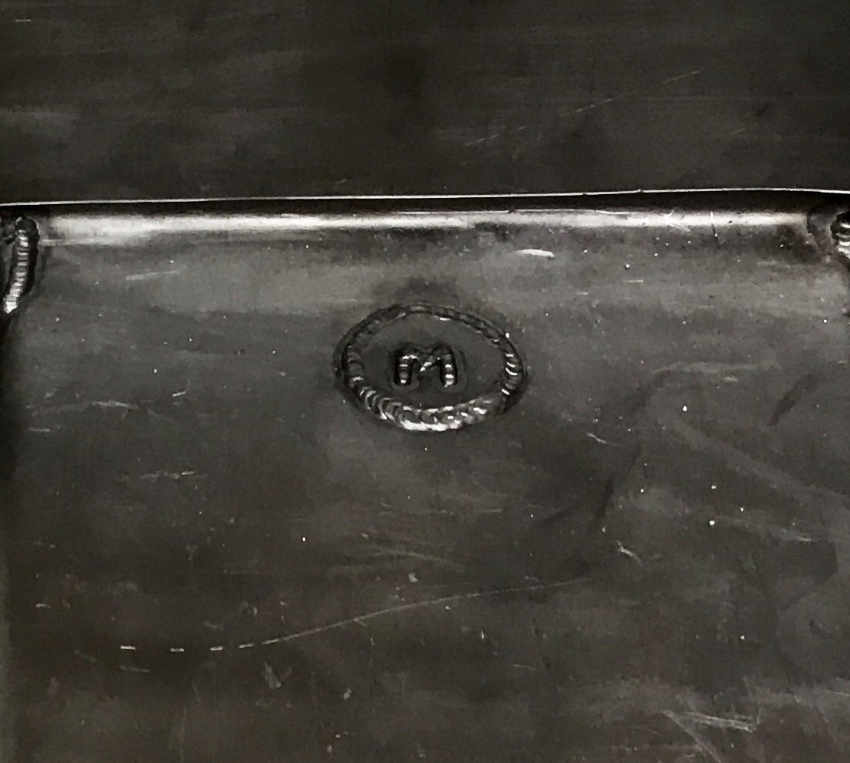
Meet: Marcus R, A Specialist in Lead Roof Restoration
“Lead is invaluable material, acting as weather protection and providing a major aesthetic for traditional British buildings”
I met with Marcus, a specialist in lead roofing. Marcus’s work takes him to some of the most prestigious buildings in London. He worked on the restoration of St James’s Palace, a Tudor building, dating back to 1531.

Marcus restored a lead roof on project in Kensington Gate, a Grade II* listed property. OLBC are carrying out the full house refurbishment. And we require the highest level of craftsmanship to achieve outstanding results.
Lead has been used since Roman times to cover roofs. Lead roofs feature in Britain’s most iconic buildings, including Hampton Court, and the Tower of London. Lead was first mined in 6500 BC in Anataolia. The Romans used lead extensively for both roofing and plumbing. Unlike other material, lead doesn’t need protection from corrosion by being painted: it is protected by its own oxide layer. However, modern acid rain can erode it faster than in ancient times. A special oil, patination oil, is painted onto the lead to ensure it doesn’t develop a white streaky surface effect from oxidation and then subsequent sulphation, caused by the acid rain. When this white ‘bloom’ effect develops it tends to trap more acidic material thus accelerating the erosion of the surface. Surprisingly, underneath the thin oxide film, the lead is bright, shiny bluish-white and when you scrape it, you see how soft is. It is this malleability that makes it easy to squeeze or roll into different shapes.
“There is a long tradition of marking leadwork. Plaques are most likely to be found on country houses or churches with large areas of lead and are often to be found on rain water hoppers. Early fire insurance company plaques were often made of lead marking the houses that were insured.”

Lesser buildings may still bear the historic of works – most common are the outlines of hands and feet, often initialled and dated.
How did you become involved in lead roofing?
I learned to burn lead at the age of sixteen alongside my uncle, Mick Pollington. Mick was gained a reputation throughout London for being the best lead specialist in town. I struggled to concentrate in school, and seeing the movement of lead captured my attention. Something malleable that could be manipulated suited my short attention span. I decided at an early age that this is something I want to invest my time into.
Do you think there is an element of artistry involved?
Absolutely. The lead work we create outlives us. Investing in a lead roof leaves a footprint that can be passed on from generation to generation.
“The concept of creating something that will surpass my own lifetime drives me to reach perfection working on a project.”
Is it just roofing work that you work with lead with?
Generally speaking yes, but many years ago I ended up with leftover lead sheets from a project, so I decided to cast them into plant pots. I was happy with the result and created hundreds of units of them.
“We ended up selling them as a display to Moyses Stevens, an old established florist company at Harrods.”
Is there more of a demand for restoration projects or new lead work?
Restoration work. There are lots of poorly executed jobs that we are called in to repair. A majority of time we see the lead has been fitted incorrectly, so it ends up overstressed and splitting. Our job is to salvage it.
What sets apart a poorly executed lead work job to an exceptional one?
A lot of tradesmen claim they are roof specialists, but it’s instantly clear to see the difference in the work. Hammer marks, when the lead is shaped, are a big no-go. A specialist requires an extensive understanding of grading and folds the lead neatly.
Lead roofing is surprisingly mobile as is the timber structure beneath it. The art is to prevent the lead splitting or sagging over time.
In order to prevent lead from splitting there needs to be an understanding of how to allow the lead movement and ventilation. I use copper clips to attach the lead to the structure. We sometimes fit rubber expansion joins to allow movement between one sheet and another.
Can you explain about why there is so much movement in lead?
The temperature of lead roofs varies depending on differential between the outdoor and indoor temperatures. Then add the effect of strong sunlight on a large area of lead: it varies far more than the outside air temperature and worse you can end up with a massive recurring temperature cycle through day to night!
Can you explain what you mean by grading?
Every sheet has a different weight, which will be assigned a code. You have to look at the span of the area the lead is covering and use the right weight (code) of sheets.
Can you explain what lead flashing is?
Lead flashing refers to thin material used to prevent leaks, and is fitted into the joints between structures of differing materials to allow the water to be guided away.
I would imagine a lot of people put off restoring the roof in their home, as they feel people can’t see it. Do you think that roofing work is often neglected?
The fact that is something so far away means that people overlook the potential in roofing. Roofing can produce incredible results, and in many ways it is the structure that binds the whole buildings together. There is no point in working on a full house refurbishment and neglecting the roof. It gives the building and neglected appearance. Neatly folded lead that has been coated in oil can transform the exterior appearance of a building.
How does your role interplay with other tradesman on site? I can imagine you have to work closely with masons.
There is a direct intersection between lead and masonry. We work as a team, and our work has to compliment each other’s. Trust in each other is required, which is why the jobs I am recommended for are word-of-mouth.
I work repeatedly with the same network. I need to know that once I have fitted the lead, that the brickwork surrounding it will compliment the work. I like the element of collaboration.
What is the thing you enjoy most about your role?
I love casting and manipulating the lead. Sculpting a material, which has so much malleability, allows me to be creative. I also like that every job is different and requires me to think laterally. Fitting lead requires us to tailor our work to the building.
“I love being high up, towering over London’s sprouting architecture.“
Working on the roof is like having a private viewing platform. The city has stunning views to offer, and it allows me to view London life from another perspective.
Can you talk me through the Kensington Gate project?
It was one of the most challenging jobs of my career. When we arrived at the job we could see the roof had been butchered over time. The entire roof covering required replacement. We repaired the roof structure before moving forward with renewing the hand cut Welsh slates and lead work. I’m really pleased with the results.
As I’m interviewing Marcus, I can see it is hard to keep his attention. I can see why Marcus works with a material that allows his mind freedom and flexibility.
Marcus is one of many craftsmen that specialise in heritage buildings on our client projects. Marcus’ experience, combined with the exceptional talent of our team of interior designers, architects, engineers and planning experts allows OLBC to manage your project with the highest level of care.
We can transform your home, while remaining sympathetic to its unique historical charm. Send a message to one of our experts today to learn more about how we could work with you.
Words and photography by Emma Coady, Marketing Manager for OLBC

